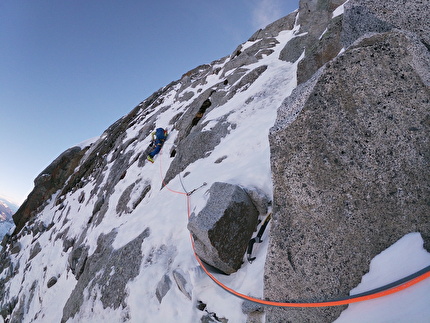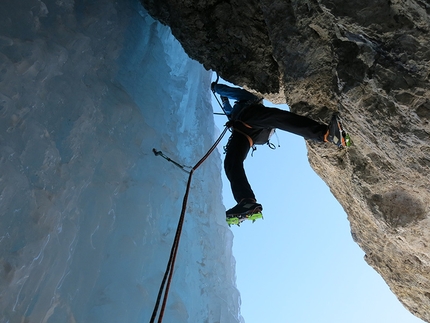Hard winter ascent on Cima Busazza (Italy) by Emanuele Andreozzi, Stefano Falezza
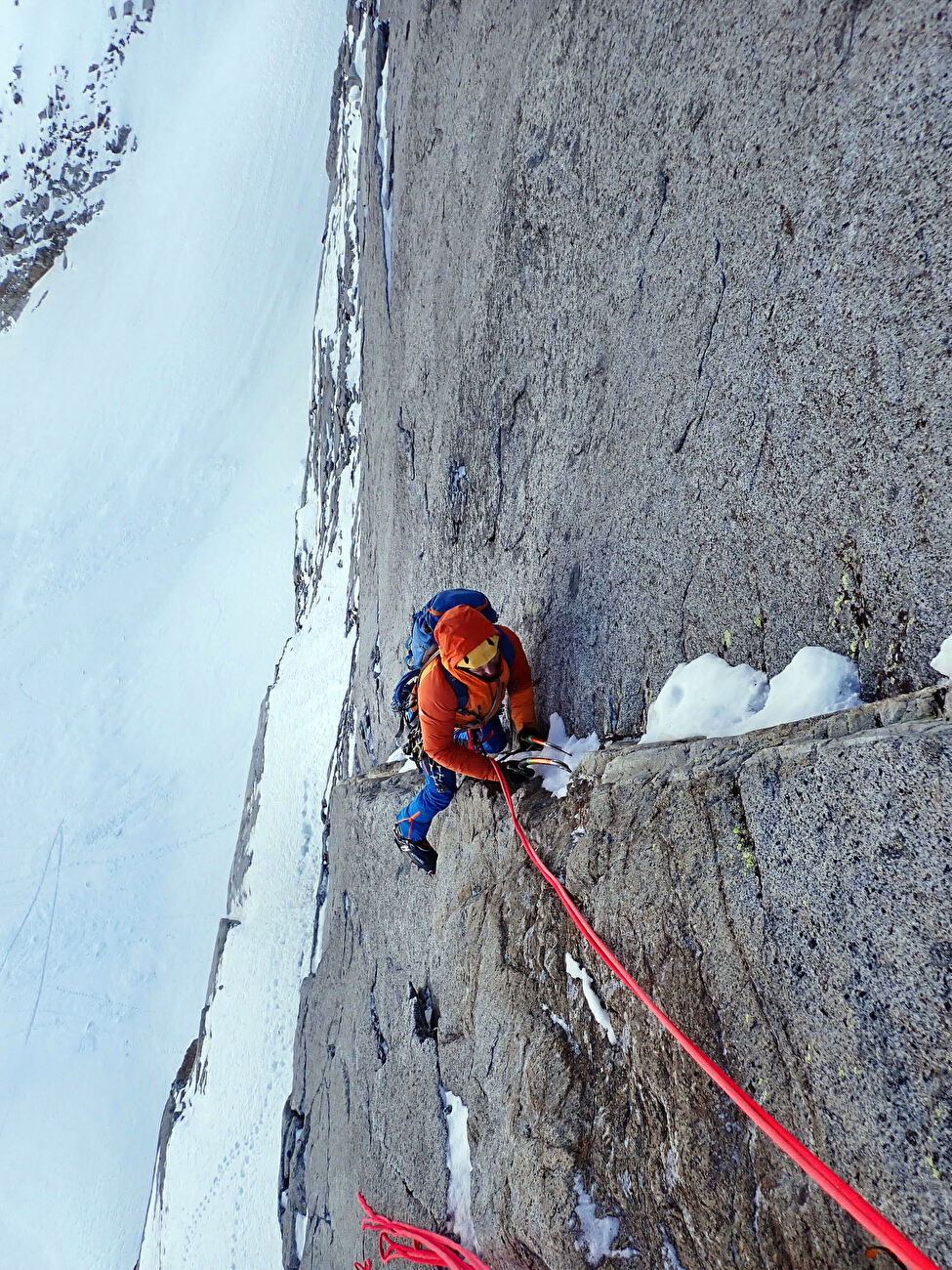
 1 / 20
1 / 20 archivio Emanuele Andreozzi
archivio Emanuele Andreozzi
On March 7, just three days after establishing Via Teti with Andrea Gremes on the north face of Cima Busazza, I was back at the base of the wall, this time with Stefano Falezza. Our goal was to attempt the first winter ascent of the Dell’Eva-Taddei summer climb, established in 1969 and graded V+.
With climate change making the face less advisable in summer, we thought that an old, forgotten summer climb could become a great mixed climb in winter. After all, we weren’t inventing anything new — there are plenty of examples where this has worked very well in the past.
The Rébuffat-Terray on Aiguille des Pélerins is perhaps the most famous. Ever since British climbers Rab Carrington and Alan Rouse climbed it in "modern mixed" style in 1975, it has become one of the most classic and popular couloirs in Chamonix. There’s also a great example closer to home: in 2015, Francesco Salvaterra and Marcello Cominetti did the same thing with Via Hruschka on Mur de Pisciadù Orientale, which is now one of the most repeated ice gullies in the Dolomites.
As expected, crossing the Bergschrund required some shenanigans, but we were rewarded with a beautiful pitch of pure ice. This was followed by a long traverse across a snowy ledge that brought us beneath a smooth, vertical rock shield, split by a slightly diagonal crack. This is the only obvious line of weakness on this steep section of the wall and thus the obvious line Dell’Eva and Taddei must have taken in 1969.
Stefano moved quickly across delicate slabs and reached the base of the crack, climbing it for a few meters before coming across an old peg — proof that we were indeed on the right route. Before the crack became harder, he stopped to belay on a small ledge, the only comfortable spot to rest at that point.
The next pitch turned out to be more challenging, offering sustained, technical climbing. Thin hooks, small but good footholds, and excellent protection made for an exciting lead. Only the final meters became heart-fluttering, as ice increasingly clogged the cracks until they was completely covered, leaving me with no way to place any gear. Unfortunately, the ice consisted of fragile, hollow layers of alpin ice, detached from the rock and insecure - the climbing felt far from safe. Honestly, I would have preferred a clean, dry crack instead of this mix that caused nothing but trouble. After several tense meters, I spotted a large, solid spike just to the right of the crack. When I finally hooked it with my axe, I breathed a deep sigh of relief and set up the belay.
From there, I watched Stefano climb the most beautiful pitch of the route — a delicate crack in full exposure on the vertical face, leading into a small ice-coated corner. He climbed with finesse and confidently; from my vantage point, it was a real pleasure to watch.
The next pitch was mine and had the potential to be just as good: a delicate ribbon of ice running up a completely smooth granite slab, maintaining a consistent width for all 60 meters. In short, a nigh perfect sliver — but the lack of pro made it a bit unnerving. Still, it was the last difficult pitch; from there, we climbed quickly and soon reached the summit.
The consequence of starting late was that we enjoyed a spectacular sunset on the summit ridge, where the exceptionally clear skies allowed us to see all the way into the Monte Rosa massif. It was truly the perfect ending to such a satisfying day on the north face of Busazza.
by Emanuele Andreozzi



 Copia link
Copia link

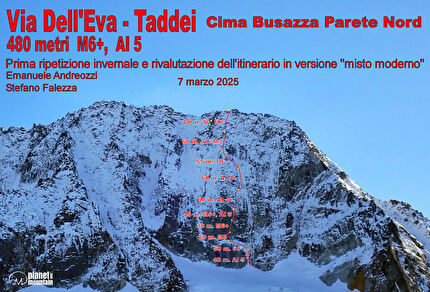
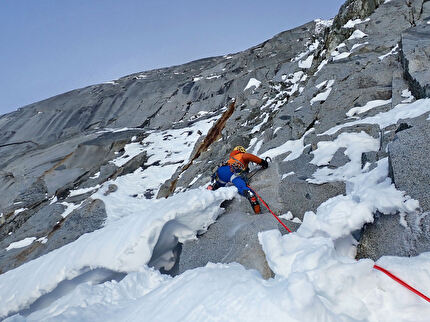
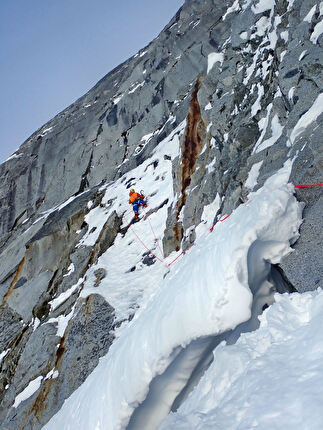
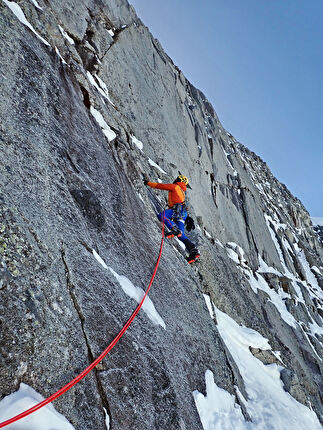
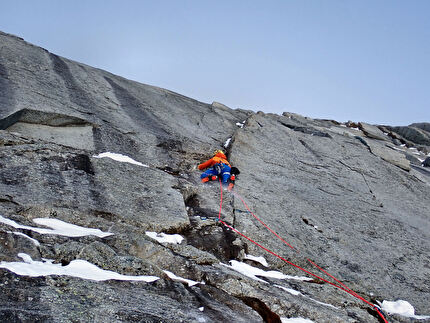
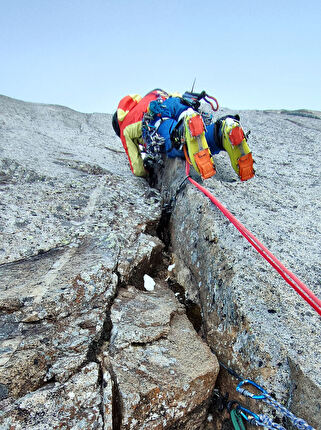
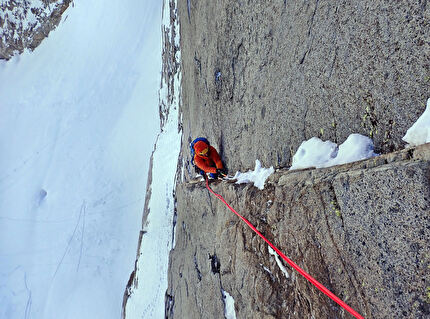

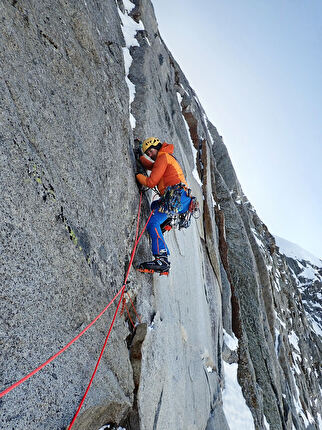
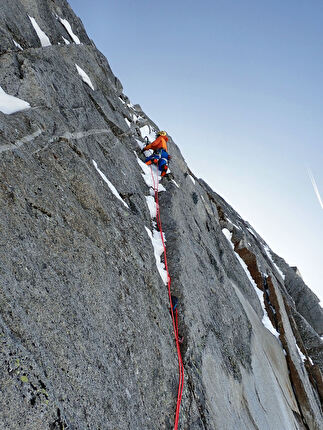
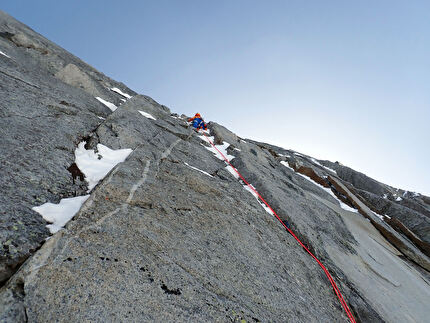
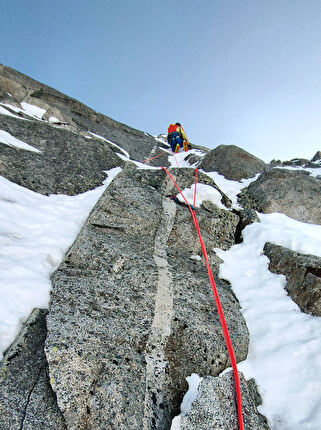
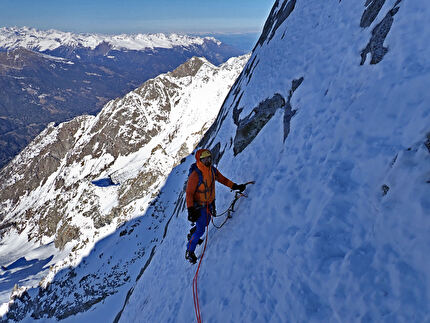
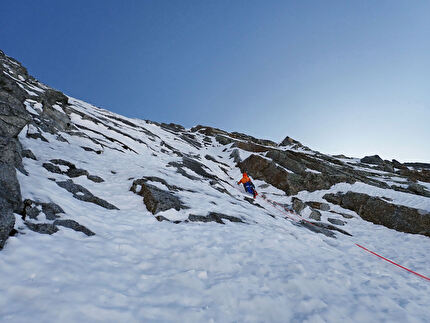
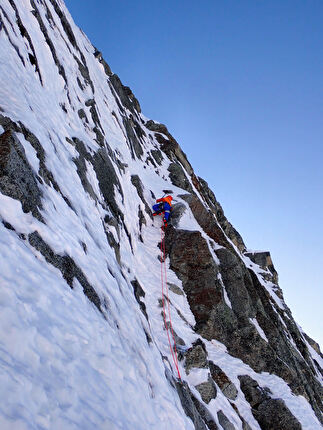
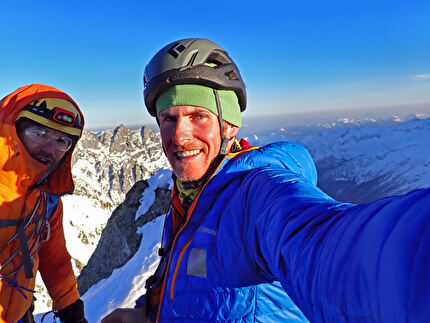
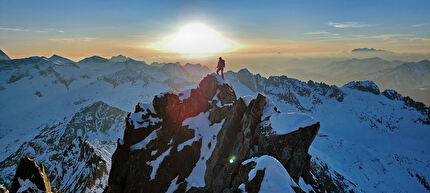
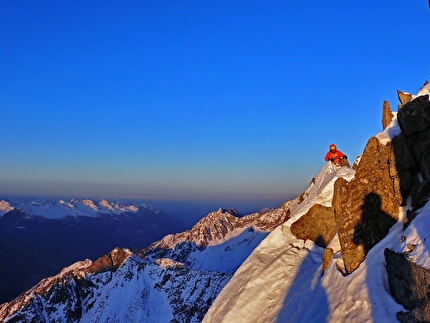
 See all photos
See all photos
